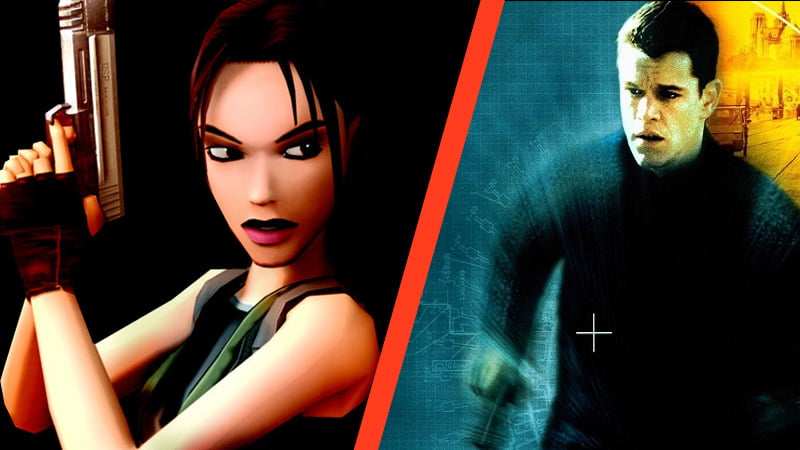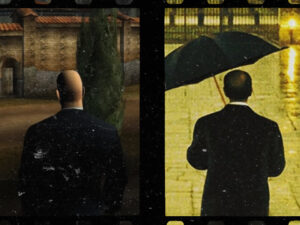Cut Scenes is Josh Wise’s regular column on the intersection between film and video games. This week, in celebration of the Tomb Raider film, it’s Tomb Raider: The Angel of Darkness vs.The Bourne Identity.
Sex symbol, icon of cool, sangfroid and flirtatious: Lara Croft was as much a reflection of James Bond as she was of “riot grrrl” feminism. For years the two franchises danced a jerky foxtrot, flitting between brassy excess and gritty refinement. Their mood swings even share a few coevals.
In 2006, as Casino Royale reshuffled and dealt 007 a new hand, Crystal Dynamics revived Lara in Tomb Raider: Legend – with Keeley Hawes’s wry tones suggesting a perpetually-cocked eyebrow, à la Roger Moore.
Just as Skyfall, in late 2012, took us onto the chaise longue while a woebegone Bond unpacked his mother issues, Tomb Raider, mere months later, veered toward vulnerability, demons of a personal nature, and a plot that sagged like a soggy soufflé.
But before all that, in 2003, Tomb Raider: Angel of Darkness beat Bond to the punch. Seeking reinvention, Core Design looked to the same place Barbara Broccoli did: The Bourne Identity.
Our scene is set in Paris, but it’s a tale of two cities. The first: kettle-black spires and wrought-iron filigree, a place where darkness collects at your ankles, haunted by a string of brutal murders which the press attribute to the ‘Monstrum.’ Poe, eat your tell-tale heart out.
The second: with names like ‘Parisian Back Streets’, ‘Derelict Apartment Block’, and ‘Industrial Rooftops,’ it’s a city of corrugated metal warehouses abutting the backs of neglected tenement blocks. It’s the Paris of John Frankenheimer and Doug Liman, who both shot their car chases (Ronin, The Bourne Identity) in La Défense: a business district just outside the city limits, at the westernmost reach of the Axe historique, and demarcated with an orbital highway.
Clambering across rainy gutters – her handholds once rock, now drainpipe – Lara is on the lamb. As she reaches a block of flats, the stairwell scene from The Bourne Identity plays out in reverse. Liman’s shabby interiors are reflected here: the chipped custard wallpaper, the vertiginous scramble of heavies, the walls closing in. Croft Climbs while Bourne free-falls; you half-think they might pass each other.
Owing to Lara’s abstemious relationship to action – years of inveigling marketing omitting the lengthy stretches of quiet wandering at the series’ heart – the scene’s tension is accidentally heightened by the game’s torpid controls and movement. It isn’t easy fighting enemies, even fleeing a test of dexterity.
The Stairwell scene in Bourne comes near the end; the quiet assassin makes his way down to street level, absolved, tabula rasa. The film’s writer, Tony Gilroy, specialises in just this brand of hero: quiet, in search of himself, a cipher silhouetted against a vast organisation hot on his heels – whether it be the CIA, in the case of Bourne, or Kenner, Bach, and Ledeen in Michael Clayton.
Gilroy’s touch rubs off on Angel of Darkness as well. Croft makes her way instead to the rooftops – never belonging on street level – the lament of Parisian police sirens fading off. The organisation hot on her heels wasn’t them; it was her franchise. It was the last hurrah for Core Design, a vie for redemption in the face of sludgy ennui. It wasn’t met well. Souped-up with the power of the PlayStation 2, but hobbled with old design, it felt more an embalming.
Yet here was Lara, outgunned, dressed in dark denims, a vulnerable fugitive in search of herself. For the briefest of moments, on those gloomy rooftops in 2003, she found herself renewed. Alas, we’ll never know where that Lara could have lead us. Oh well, we’ll always have Paris.












